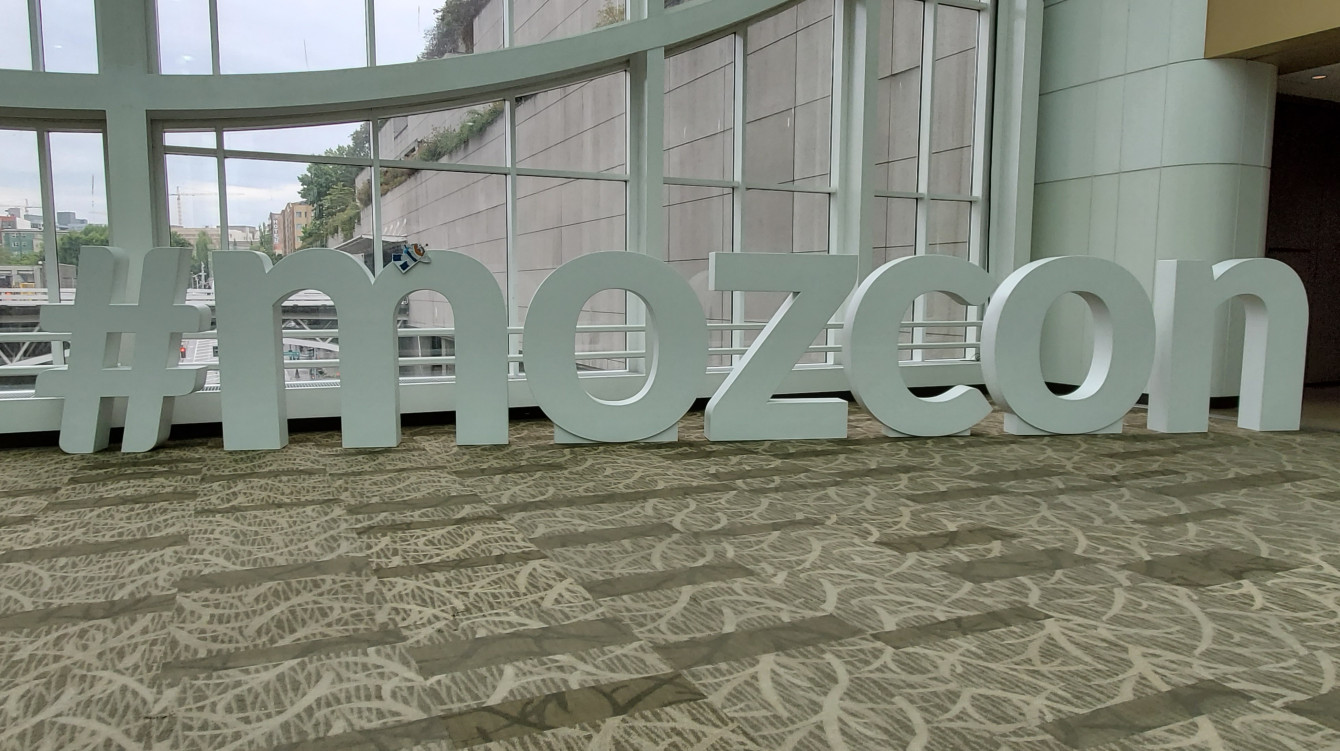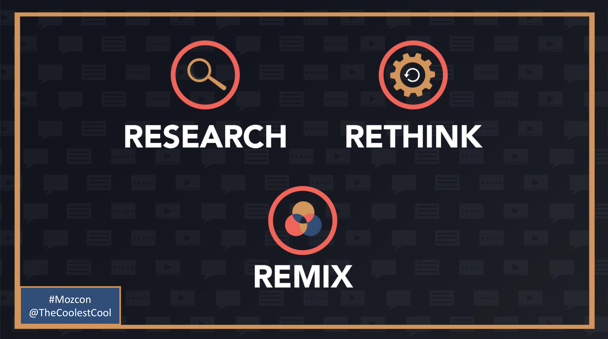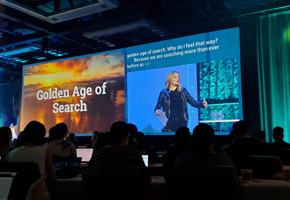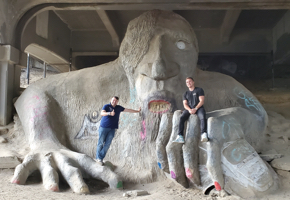
MozCon 2019 Recap
15
minute read time
Last month, I had the privilege to travel across the country to Seattle, WA to attend MozCon, a three-day digital marketing conference. This was exciting for me because their blog is what first piqued my interest in SEO and the digital marketing world as a whole. Each year I would see the photos and takeaways from the conference and knew I wanted to see it for myself one day. Luckily, and thanks to Atypic, this year I was able to finally experience MozCon firsthand.
There are many reasons this was such a great experience; meeting new people, the happy hours, exploring the city, not to mention this was my first time west of Tennessee. However, my main goal in attending was to find out new ways to expand my knowledge to be able to try new things for our clients.
A few of the key topics featured during this year’s conference were: Local SEO, Content Marketing, Featured Snippets and the Future of Search. Sarah Bird, the CEO of Moz, described it as: “We are in the golden age of search,” and there is a lot to be excited about in the digital marketing world. With Google’s growth, as well as other channels, there have never been as many opportunities to generate traffic and brand awareness, influencing overall marketing success.
What is Local SEO?
Put simply, Local SEO is the process of optimizing your business to rank better for a local audience.
There’s no question the future of search includes a focus on Local SEO. Google has been increasingly focused on local search even as far back as 2005 when Google launched Local Business Center, now Google My Business (GMB), and merged this data with Google Maps.
Within Local SEO, there are two separate subcategories: optimizing for the Local Pack and Localized Organic searches.

As the pie chart shows, Google My Business signals have the greatest weight for Local Pack ranking factors.
In the past, the proximity from the searcher to the business was one of the few ranking factors associated with your GMB account. However, with all of the new features Google has added, there are more signals for the search algorithm as well.
Besides proximity, some of the primary signals within your GMB account is your business category and if your targeted keywords are in the business title and NAP (name, address and phone number).
Image Source
Greg Gifford, VP of Search at Wikimotive, described the GMB profile as “your new homepage” as it is likely the first impression users have with your brand. Potential users no longer need to go to your website in order to call, get directions, view photos or even make an appointment. This is why it’s become so important to make sure your GMB is optimized in order to benefit your consumers. Included in these GMB optimizations are Google Posts.
Google Posts are a feature that allows businesses to ‘post’ content in the search results to engage with customers before they even get to your website.

Think of Google Posts as another channel to direct your audience to any promotion, event or blog post that is important to your business.
In Localized Organic rankings, links and on-page optimizations are still the highest priority. One thing that surprised me was the variance in the search engine results page (SERP) for a single query in the same market.
Rob Bucci, VP of R&D at Moz, used the following example: a user in the zip code 28204 searching “how to file small claims” could see a completely different SERP than a user in 28262 performing an identical search. This means you have to be intentional on which combination of query and location to optimize for, as well as being able to track multiple zip codes within the same city.
A good place to start increasing your localized organic ranking is by focusing on your website’s EAT (expertise, authority, and trust) along with SEO 101. While the best way to improve your EAT is by other authoritative sites linking to yours, even having mentions across the internet will help. Google uses entity determination to identify your brand and decide if you’re worth paying attention to.
A way to do this is by leveraging the content on your website.
What is Content Marketing?
Content marketing is the process of creating and sharing content online in order to promote a brand or topic. The types of content that can be utilized are endless, including blogs, videos, images, social media and many more.
Even 23 years after Bill Gates titled an essay “Content is King” on the Microsoft website, the phrase is just as true today. Unless you have a topic that you’ve been told to write about, such as “Hey Nick, you went to that digital marketing conference in Seattle, can you write a blog about it?”, coming up with topics can be challenging.
Even more difficult is the process of writing about a highly competitive topic, such as real estate, and finding a way to stand out from the crowd.
Content is especially important for SEO success, and while we preach to our clients about this fact, how do we know the best topics to focus on? Ross Simmonds’ presentation on ‘How to Uncover Content Ideas Worth Chasing’ would answer that question. Content can be such a competitive advantage online and a great way to show your expertise, authority and trust (EAT) to potential customers.

There are three important steps when deciding what content to pursue and how to differentiate it from your competition:
- Research
- Rethink
- Remix
Source: Ross Simmonds MozCon presentation
During the Research stage, you want to make sure that you understand your audience and what channels they are spending time on. Social media is a huge marketing channel, but not all mediums serve the same purpose for your customers.
For example, we might not share the same type of content on our LinkedIn, Instagram or Dribbble accounts. While you’re researching ideas, you want to make sure to find the correct User-Channel fit. Once you’ve identified your personas for each platform, it’s time to move on to the Rethink stage.
The Rethink stage is completely about discovering a new way to deliver the content to resonate with your audience. This includes the title, format and connection between your users and the content itself.
There are many tools you can use to discover topics; one of our favorites is Google Trends. With this tool, you can enter a phrase or topic and see what is trending as it relates to that topic. Based on these insights, it’s time to remix the idea.
In the Remix stage, the goal is to completely personalize your content to your audience and your industry. After identifying the topic you want to pursue, ask yourself “How can I create this content to make it better than what exists today?” This is all about framing the content in a way that people will remember.
In the past, we’ve created content to bring ourselves traffic. Now, Google is using pieces of content to answer user’s intent within the SERP, in the form of a Featured Snippet.

What are Featured Snippets?
Featured snippets are selected search results that Google chooses to display on the SERP in order to quickly answer a user’s question.
Featured snippets have been on the rise over the past few years and you’ve more than likely seen one without realizing what it was. In research performed by Britney Muller, Senior SEO Scientist at Moz, she found there are 165% more featured snippets today than in 2016 and 24% of all SERPs contain at least one.
There are many different types of featured snippets including video, accordions and bullets; however, paragraph and list snippets are the most common.
The best way to gain a featured snippet is by constantly testing what works and what doesn’t. Research keywords and phrases that you are already ranking for on the first page of Google and find a way to answer the user’s intent better than the snippet listed.
Currently, the downside is that there is no real way to measure the value these can bring to your website other than brand awareness. However, ask yourself if you would rather own the featured snippet, or let your competitor?
Conclusion
MozCon was on my Career Bucket List and a great experience for me that I’m thankful Atypic allowed me to attend. We gained so many takeaways during those three days that I can’t wait to apply for our clients.
Also, if you’re traveling to Seattle in the future, here are a few spots we enjoyed:
- Pike Place Market (of course)
- Space Needle
- Amazon Go
- Gas Works Park
- The Fremont Troll
- 8oz. Burger & Co.
- CenturyLink Field for a Seattle Sounders match
- Fremont Brewing Company









